Media Platform &
Creative Studio
Magazine - Features
In conversation: Anning Song
Joana Alarcão
In this interview, we spoke with Anning Song, a compelling design practitioner whose work bridges the gap between data visualization and human-centered storytelling. Song's artistic practice is distinguished by her commitment to giving voice to the silenced and capturing raw truths through powerful visual narratives.
With an MA in Data Visualization Design, Song has developed a unique approach that challenges the traditional boundaries between analytical objectivity and emotional resonance. Her work spans diverse cultural contexts, from examining China's healthcare system to engaging with London's art scene, always maintaining a focus on collaborative storytelling rather than speaking for communities.
As digital spaces continue to evolve, Song sees her role as critically engaging with both the harms and potentials of our increasingly mediated world, using art as a tool for fostering empathy, challenging injustice, and building meaningful connections across cultural boundaries.
22 July 2025
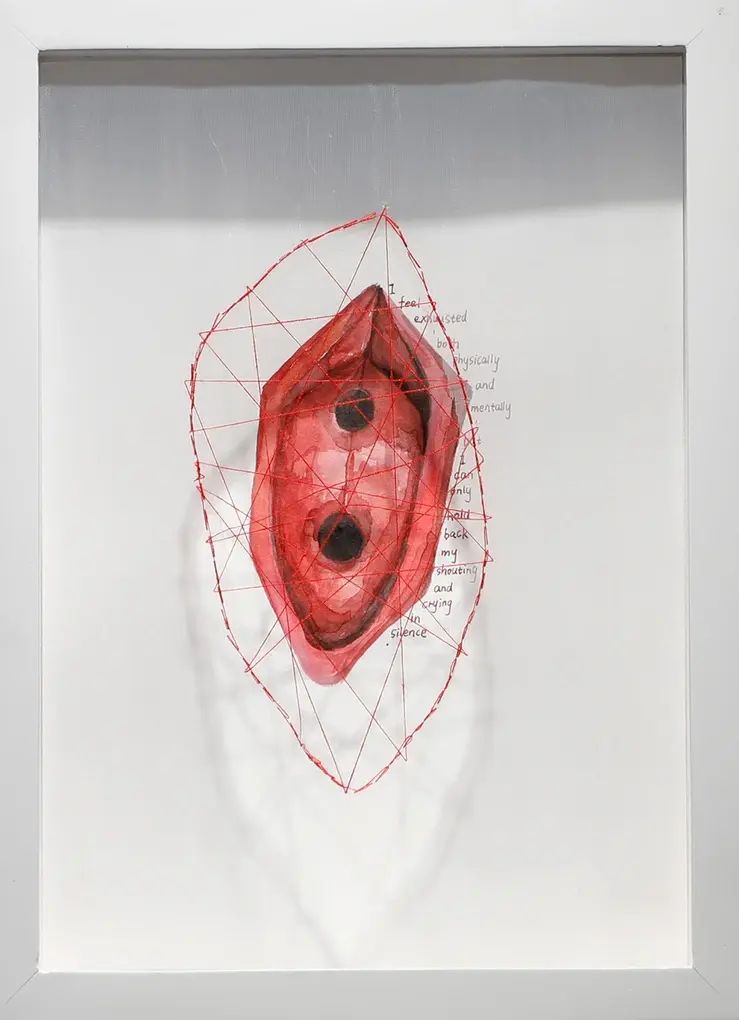
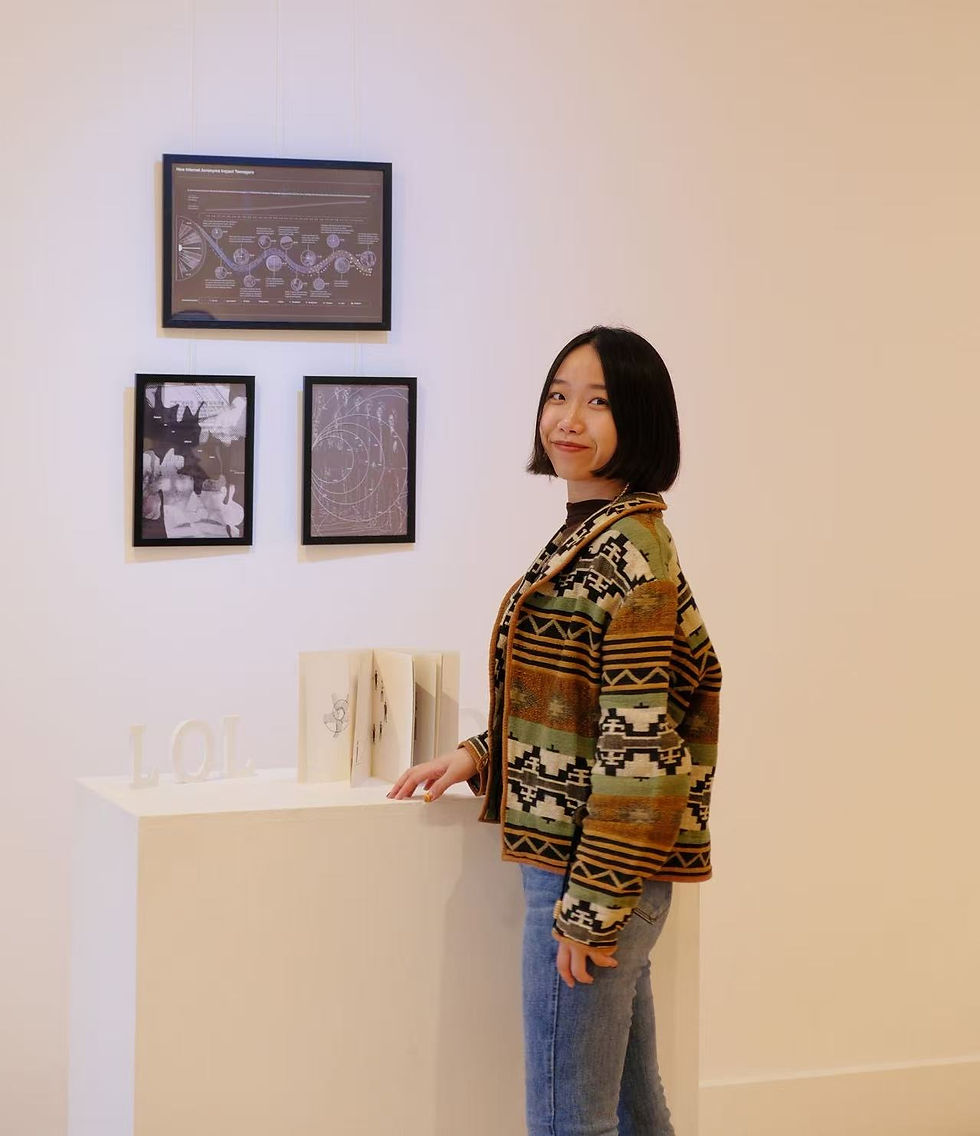

Based in London, Anning Song is a multidisciplinary designer and artist whose work centers on human-centered storytelling. With a passion for design and artistic creation, she explores themes of self-discovery and overlooked social issues, aiming to reflect the complexity of human experience and evoke deep emotional resonance with her audience.
Anning’s practice involves distilling key elements from her chosen themes to create meaningful dialogues through a variety of media, including video, painting, and installation. Her approach blends conceptual depth with visual sensitivity, drawing viewers into immersive experiences that challenge perception and spark empathy.
She holds an MA in Data Visualization Design from the University of the Arts London and currently works in data visualization while continuing her independent art practice. Since 2024, she has participated in several exhibitions across London, engaged in international art competitions, and been featured in global art magazines.
What key moments or experiences led you to become the design practitioner you are today?
Since childhood, I have been a sensitive and observant individual, always driven by a strong curiosity about the unknown. This personality trait has nurtured a spirit of inquiry within me and laid the foundation for my later design practice. My love for beauty led me to study fine arts in high school, where my early education focused primarily on visual expression and formal aesthetics. However, at that stage, my understanding of design theory and methodology remained relatively superficial, limited to surface-level aesthetics.
As I delved deeper into design principles and structural aesthetics, I gradually came to understand that design is not merely the organisation of visual elements—it is also a medium for social communication. In my subsequent creative work, I began conducting in-depth research and engaging in interdisciplinary exploration for each project. However, through continued practice, I encountered numerous challenges, such as unclear communication of ideas or material limitations that hindered the realisation of my concepts. These repeated experiments and setbacks gradually helped me realise that the essence of design lies not only in visual appeal, but also in its capacity for communication and empathy.
This realisation led me to incorporate critical thinking into my design process, prompting me to continually reflect on the relationship between design, people, and society. I began to pay greater attention to integrating theory and practice, exploring how design conveys emotional depth and generates meaning within specific social contexts. Through this ongoing process, the concept of human-centred design has taken root as a guiding principle in my creative approach.
I firmly believe that design is a language—its power lies in its ability to express and communicate. In each of my projects, I strive to uncover the essence of a subject and use visual and spatial design to convey thoughts and emotions, aiming to evoke emotional resonance and reflection in the audience.
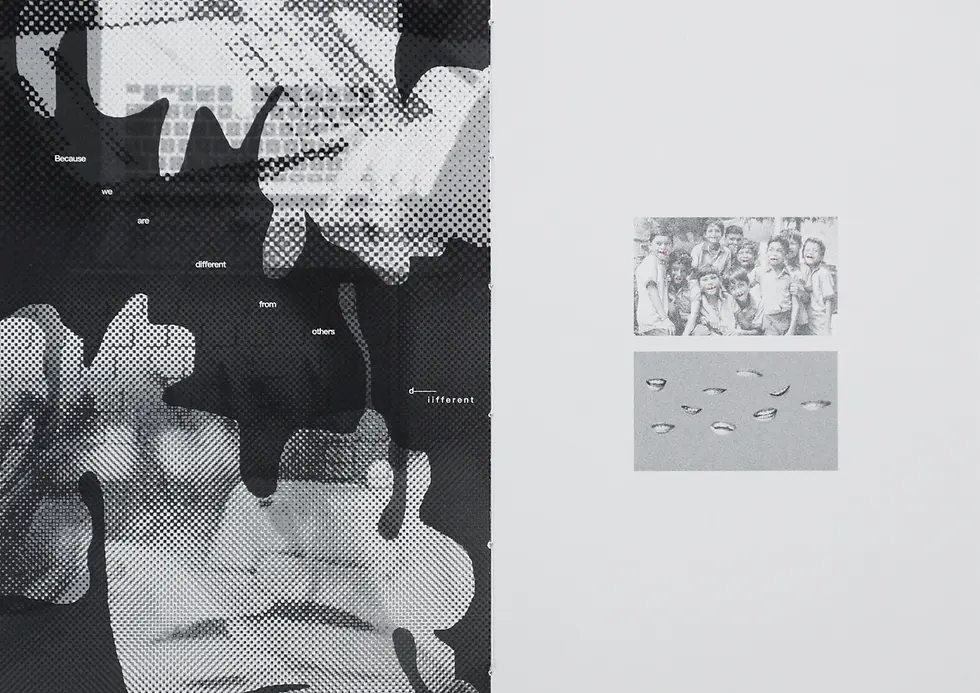
In your statement, you mentioned striving to mirror real-life experiences, inviting the audience to see themselves within the narrative of your work. Can you share a specific technique or material you use to help you create visual and conceptually compelling narratives?
In my design projects, I tend to adopt a narrative-driven approach. This is not only a design strategy but also a fundamental way for me to express ideas and emotions. Every design element and piece of information is rooted in in-depth research on contemporary social issues. I often extract key concepts from the subject matter and employ symbolic and metaphorical visual language to imply the core of the story. This method not only invites critical reflection and emotional resonance from the audience but also allows me to engage deeply with human needs, social tensions, and overlooked systemic issues.
At the early stage of a project, I usually conduct extensive research around the topic, including academic readings, interviews, and archival investigations, to gather real voices and lived experiences. This forms the foundation for building a narrative structure. I then collect visual references and conduct material experiments to explore how to communicate the story in the most impactful way.
For instance, in my project, This is Our Secret Code, I discovered through research that the popularity of online acronyms among teenagers is largely driven by group dynamics and peer culture. In response, I used symbolic metaphors to explore the relationship between the individual and the collective. I extracted key terms from my research and integrated them into the design. The final outcome took the form of a printed book, combining collaged representations of teenage behaviours with acronyms. The use of a physical book as the medium metaphorically suggested a return to traditional forms of literacy, in sharp contrast to the rise of digital abbreviation culture among youth. The tactile quality of paper, the rhythm of page-turning, and the texture of the collage all served to reinforce the narrative on both visual and conceptual levels.
By combining abstract visual expression with grounded social context, I aim to construct a space where viewers not only observe the story being told but also begin to see their own experiences reflected within it.
With your MA in Data Visualization Design and your current work in the field, how does your analytical background inform your artistic practice? Do you see tension between data-driven objectivity and the emotional resonance you seek in your art?
During my studies in data visualisation design, I was deeply influenced by Giorgia Lupi’s theory of data humanism. Her perspective—that data visualisation should move beyond scale and objectivity to focus on the human experiences and social realities behind the numbers—prompted me to fundamentally rethink the relationship between data and design. Rather than viewing data as cold, abstract figures, I began to see it as a vessel for human behaviour, emotion, and narrative.
Inspired by this approach, I started to place greater emphasis on human-centred design thinking. I believe that data-driven design and emotional resonance are not in conflict; instead, I see data as a bridge for emotional connection. In my artistic practice, I strive to integrate data with everyday human experiences, psychological states, and broader societal structures. Through a narrative-driven visual language, I aim to create works that communicate warmth, empathy, and emotional depth.
My background in design has sharpened my sensitivity to information structure and equipped me with a strong logical framework. This allows me to identify the core issues within complex social topics and translate them into visual forms that resonate with viewers and provoke meaningful reflection. Ultimately, my goal is to create work that not only informs but also connects, inviting audiences to engage with both the data and the people behind it.
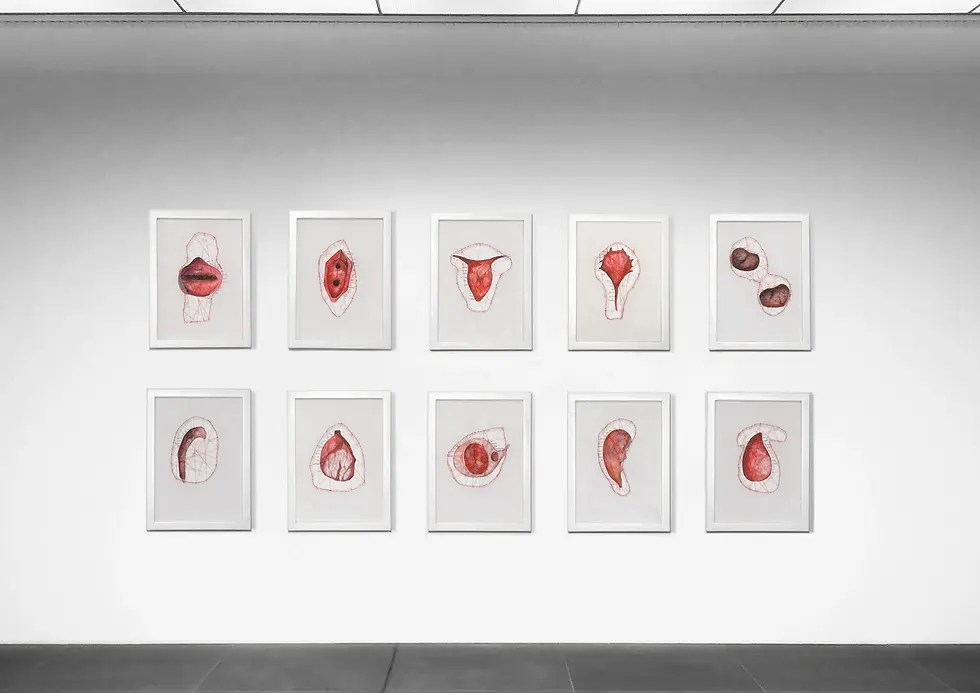
Your work gives voice to the silenced, capturing the raw truths of our shared humanity with the hope of inspiring reflection and action. Considering your experience working across different cultural contexts—from China's healthcare system to London's art scene—how do you navigate the politics of representation, ensuring you are speaking with communities rather than for them?
I view The Hidden Scars not merely as a design project, but as a process of storytelling and listening. At the heart of my creative practice is a commitment to honouring real-life contexts, whether I am examining the complexities of China’s healthcare system or engaging with the cultural fabric of London’s art scene. My goal is to create space for those whose voices have long been silenced, offering them a platform to express their experiences in their own way.
This means designing not just for an audience, but with the people whose stories are being told. I see myself not as an outside observer, but as a collaborator and facilitator—someone who works alongside communities to co-create narratives. By centring their voices and perspectives, I aim to foster a genuine dialogue between the work and its viewers.
I approach this work with critical self-awareness, recognising the implications of my own positionality. I actively work to avoid imposing personal interpretations or unconscious biases, striving instead for honesty and respect in how I represent the complexity, struggles, and aspirations of the people I engage with.
The Hidden Scars is about building empathy and prompting reflection. I am not speaking for others—I am speaking with them. Through thoughtful, context-sensitive design, I hope to amplify marginalised voices, challenge silence, and invite meaningful action.
Could you elaborate on the visual and conceptual narratives within your piece, Brand and Scar?
This project explores the emotional and psychological impact of online misinformation on its victims, with a particular focus on the mechanisms that enable fake news to spread rapidly through digital platforms. The project was inspired by a deeply unsettling incident I came across online: a three-year-old girl who had passed away from a tumour was falsely reported as having died from abuse by her parents. This distortion of truth and manipulation of grief prompted me to investigate the structural and emotional factors that allow misinformation to go viral.
Through a combination of data collection and survey analysis, I discovered that the rapid dissemination of fake news is often rooted in interpersonal intimacy. While the initial post is created and circulated by malicious individuals, its widespread reach is fueled by the trust-based relationships among online users. When information is shared within close social circles—among friends, family, or peers—it gains an artificial sense of credibility, which accelerates its spread in a way that mimics the behaviour of a digital virus. This insight became the conceptual foundation of the project.
Using narrative as a framework, I structured the visual storytelling around the life cycle of a piece of fake news—from its fabrication, through its propagation, to its real-world consequences. Visually, I employed symbolic elements to reflect different aspects of this cycle. I used drawing boards to represent the manipulative nature of online image and text editing; eyeballs to reference how visual perception drives initial engagement; and the familiar "like" icon to symbolise public validation and uncritical trust. These were combined with collaged figures to evoke the emotional and relational networks that give fake news its momentum. The merging of the “like” icon with human forms suggests the way interpersonal bonds contribute to the contagious spread of misinformation. To reflect the disruption and psychological harm it causes, I incorporated glitch effects reminiscent of frozen or broken digital interfaces.
The final section of the work focuses on the scars left behind—both metaphorical and emotional—highlighting the long-term damage that fake news can inflict on individuals and their families. These are not just social distortions but deeply personal injuries that often remain invisible and unhealed.
Ultimately, this project serves as a reflection on the ethical implications of digital communication. It is a call for greater awareness and responsibility in how we consume and share online content, and a reminder of the very real consequences misinformation can have on people’s lives.
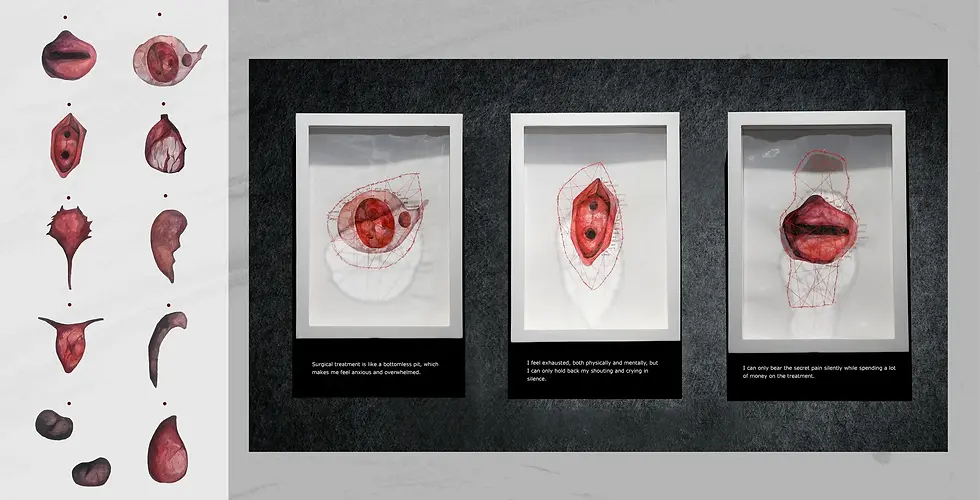
What inspired you to investigate the particular form of institutional corruption in your work, The Hidden Scar? How do you approach the delicate balance between creating visceral impact and avoiding sensationalism when dealing with such sensitive subjects?
This project was inspired by the real-life experience of a close friend. She sought medical treatment for a minor gynaecological condition but was misled into a severe illness and persuaded by doctors to undergo a series of unnecessary and costly treatments. These interventions brought a significant financial burden without improving her health. As I investigated her situation further, I uncovered a systemic issue within certain healthcare institutions—specifically, the outsourcing of clinical departments to private entities.
The aim of this project is not to expose the entire scope of institutional malpractice, but rather to reveal the emotional and psychological trauma caused by systemic dysfunction, especially as it affects those who are most vulnerable and powerless to resist. Throughout the creative process, I have held fast to a core principle: to portray reality without exaggeration, using visual language to give visibility and dignity to experiences that are often overlooked or silenced.
My research shows that sexual health remains a taboo topic in many social and cultural contexts, leading to a lack of oversight and transparency in STD-related medical departments, which are frequently privatised or outsourced. This structural opacity enables exploitative practices, such as fear-based diagnoses, unnecessary procedures, and profit-driven deception, causing harm not only to patients’ physical well-being but also to their mental and emotional health.
In response, I chose to centre this project around the voices of patients themselves. The work is built on personal narratives and integrates first-person testimonies with symbolic imagery and collage. Red threads are used to represent both physical scars and psychological entanglement; anatomical references evoke the discomfort and vulnerability surrounding sexual health; and the layering of text and image amplifies emotional intensity while reflecting the complex social conditions in which these traumas occur. I intentionally adopted a direct and sometimes confrontational visual approach, using discomfort as a strategy to break the silence surrounding sexuality, medicine, and bodily autonomy.
How do you translate culturally specific problems for global audiences without losing their particular urgency and context?
Translating issues rooted in specific cultural contexts into forms that are accessible to a global audience requires a communicative strategy that is humble, precise, and contextually appropriate. I have come to realise that the goal of this process is not to universalise cultural experiences—thereby risking misinterpretation or overgeneralization—but rather to construct a pathway toward understanding without erasing cultural specificity.
My creative practice is fundamentally centred on dialogue with the audience. When addressing a diverse international public, I tend to use metaphors, visual cues, or accessible, straightforward language as bridges for communication. This approach not only lowers the threshold for cultural comprehension but also stimulates curiosity, allowing viewers to engage with the work even if they cannot immediately grasp the nuanced differences embedded in its cultural context.
I firmly believe that expressions rooted in specific cultures can carry universal relevance—but only when their complexity and historical origins are respected. In the process of creation, I constantly ask myself: Who is my work responding to? Who is the primary audience I am addressing? This line of questioning is not about catering to sympathy or simplifying the truth, but about offering a sincere expression of lived experience and emotion. Ultimately, I hope my work provokes reflection and encourages viewers to reconsider their relationship with the world through a lens of empathy, inclusivity, and shared humanity.
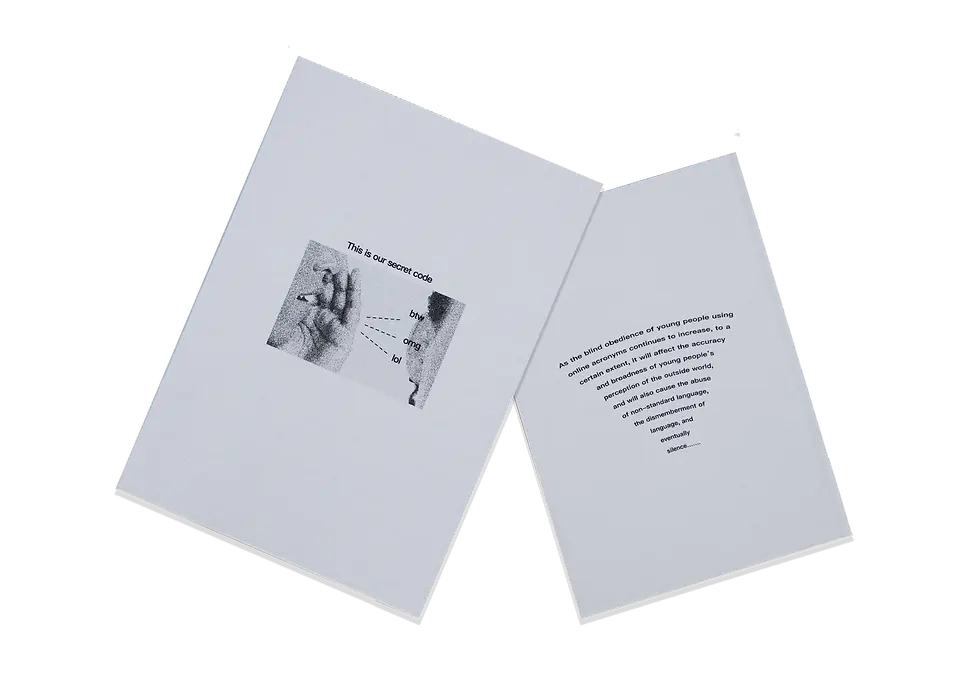
As digital spaces continue to evolve rapidly, how do you see your practice adapting to address new forms of harm and connection in our increasingly mediated world?
As digital spaces evolve and increasingly mediate how we communicate, connect, and perceive the world, I see my practice as a means of critically engaging with both the harms and potentials that arise in this landscape. Digital technologies have created unprecedented modes of connection, allowing for cross-cultural dialogue and greater visibility for marginalised voices. At the same time, they have also introduced new forms of violence—algorithmic bias, surveillance, online harassment, digital erasure—that are often invisible yet deeply impactful.
My work adapts by exploring these tensions: how intimacy, identity, and memory are reshaped in digital environments; how representation becomes both a tool of empowerment and a site of vulnerability. I seek to use digital media not only as a material but as a critical lens to question who is seen, who is heard, and who is excluded in virtual space.
Rather than retreating from the digital, I embrace its complexity. I am interested in creating works that invite slow looking, deep listening, and empathetic engagement—acts that resist the speed and fragmentation of online culture. I see digital art as a way to reclaim attention, to foster meaningful encounters, and to imagine alternative forms of care and solidarity across screens.
My practice is rooted in a belief that connection—digital or otherwise—must be intentional, ethical, and inclusive. As we continue to navigate this mediated world, I see art as a powerful tool to make visible the invisible structures that shape our digital lives and to reimagine more humane futures within them.
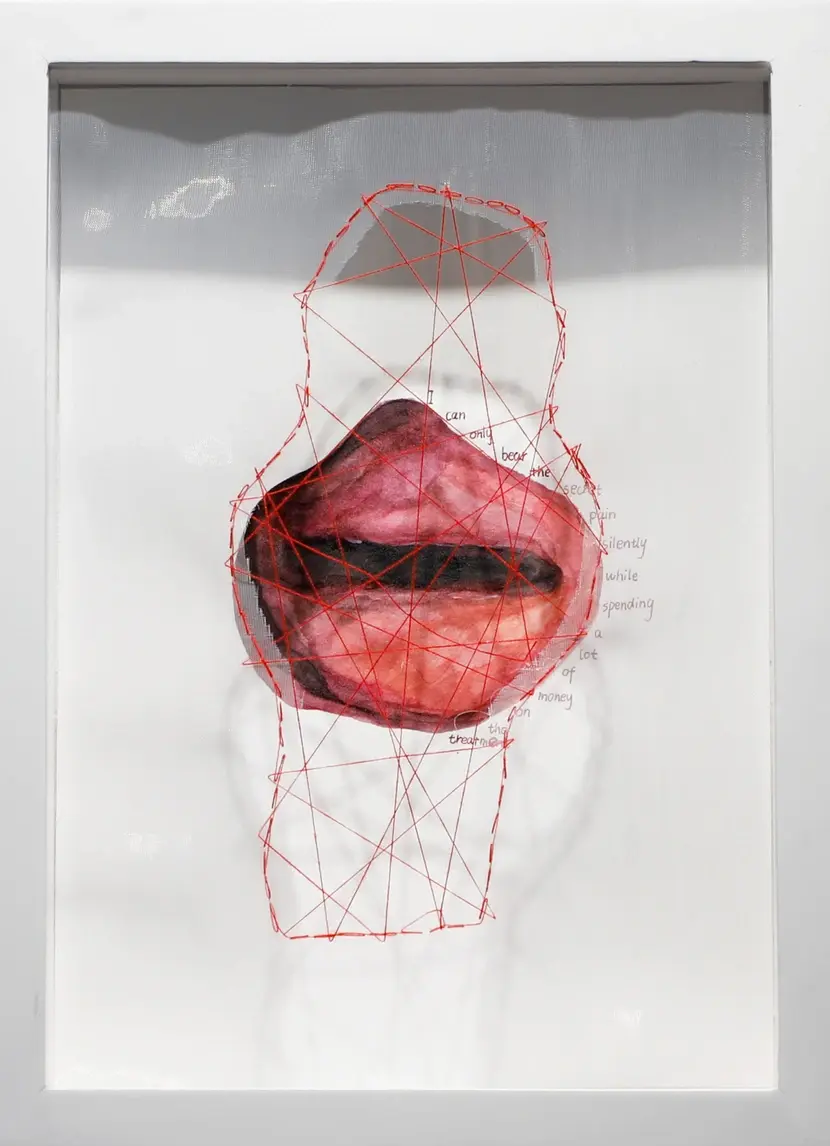
Art and artists play various roles in the fabric of contemporary society. How do you see artistic practices advancing sustainability and social consciousness?
Art is a mirror that reflects social realities. It is not merely a form of personal expression but a means of cultural inquiry and a practice for repairing social relations. I believe that art functions as a form of communication that transcends language, serving as a bridge for human understanding in today’s increasingly complex social and political landscape.
Through visual narratives, artists can expose injustice and inequality within society, give voice to marginalised identities, and evoke empathy and deep reflection among audiences. The role of art extends beyond drawing attention to issues—it lies in offering new perspectives, fostering inclusive and open dialogue, and encouraging viewers to engage more directly with social realities.
For me, art is not only about form or aesthetics; it also carries a sense of social responsibility. It is a powerful force that can drive awareness and inspire action. By revealing hidden social and ecological crises, art invites viewers to confront the injustices embedded in everyday life. This emotional engagement encourages a form of reflection that goes beyond rational discourse, transforming sustainability and social issues into more human-centred, compassionate forms of action.
Art also holds the potential to connect diverse social groups. It breaks down barriers, enhances inclusivity, and promotes alternative ways of living and thinking—ways that value sustainability, empathy, and coexistence. In doing so, art becomes more than a medium of expression; it becomes a catalyst for cultural change and a vehicle for fostering a more harmonious relationship between people and the natural world.
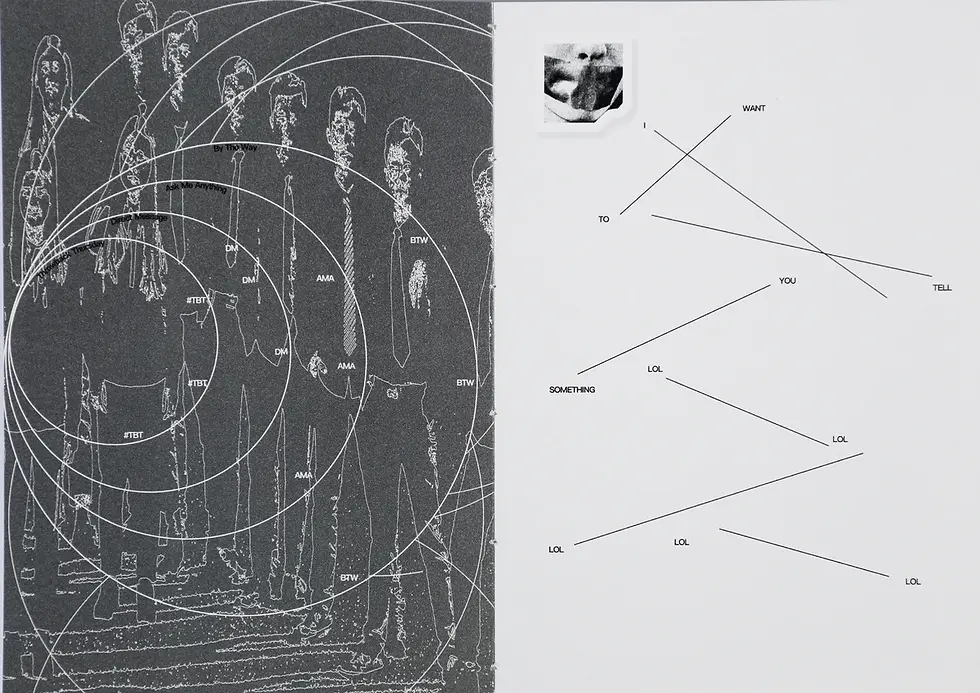
What message or call to action would you like to share with our readers?
As an art practitioner, I believe that art is not only a tool for self-expression but also a bridge that connects diverse cultures and identities. Through my work, I seek to evoke emotions and experiences that are often difficult to articulate with words, fostering empathy and understanding across boundaries. I encourage people to approach and participate in art with an open mind, viewing it as a means to explore complex identities and pressing social issues. Whether as creators or audiences, we all have the power to speak through art, to challenge prejudice, and to promote inclusivity.
I urge viewers to carry empathy and curiosity into their everyday lives, especially when encountering perspectives and experiences different from their own. It is only through active listening and a genuine effort to understand others that we can begin to dismantle the walls of misunderstanding and exclusion. Art holds the power to awaken our empathy, to inspire us to take action, and to contribute to positive social transformation.
I invite everyone to recognise the strength of their own voice and actions, no matter how small they may seem. Whether through art, conversation, or community engagement, each of us has the capacity to challenge injustice and to build meaningful connections.
Ultimately, change begins with awareness and the willingness to stand with stories that are too often overlooked. By walking forward together, we can help create a more inclusive, compassionate, and just world.
Know more about the artist here.
Cover image:
The Hidden Scar by Anning Song.
All images courtesy of Anning Song.


_Lauren%20Saunders.jpg)

